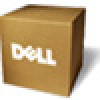Dell Inspiron 1120 Contents: Mini PCI Type 3B Data Fax Modem by 3Com User's Gu - Page 16
amended by 93/68/EEC and the Telecom Terminal Equipment and Satellite Earth Stations Directive 98/13 - mini
 |
View all Dell Inspiron 1120 manuals
Add to My Manuals
Save this manual to your list of manuals |
Page 16 highlights
amended by 93/68/EEC and the Telecom Terminal Equipment and Satellite Earth Stations Directive 98/13/EC. Such marking is indicative that this equipment meets or exceeds the following technical standards: l EN 55022 - Limits and Methods of Measurement of Radio Interference Characteristics of Information Technology Equipment. (CISPR 22 Class B). l EN 50082-1 - Electromagnetic compatibility - Generic immunity standard Part 1: Residential, commercial, and light industrial. l EN60950 (1992) - Safety of information technology equipment, including electrical business equipment. l CTR 21 (1998) - Attachment requirements for pan-European approval for connection to the analogue Public Switched Telephone Networks (PSTNs) of TE (excluding TE supporting voice telephony services) in which network addressing, if provided, is by means of Dual Tone Multi Frequency (DTMF) signaling WARNING: Although this equipment can use either loop disconnect (Pulse) or DTMF (Tone) signaling, only the performance of the DTMF signaling is subject to regulatory requirements for correct operation. It is therefore strongly recommended that the equipment is set to use DTMF signaling for access to public or private emergency services. DTMF signaling also provides faster call set up. This equipment has been approved to Council Decision 98/482/EC--"CTR 21" for Pan-European single terminal connection to the Public Switched Telephone Network (PSTN). However, due to differences between the individual PSTNs provided in different countries, the approval does not, of itself, give an unconditional assurance of successful operation on every PSTN termination point. In the event of problems, you should contact your equipment supplier in the first instance. This equipment has been designed to interwork with Public Switched Telephone Networks in the following countries in Europe: Austria, Belgium, Denmark, Finland, France, Germany, Greece, Iceland, Ireland, Italy, Liechtenstein, Luxembourg, Netherlands, Norway, Portugal, Spain, Sweden, Switzerland & United Kingdom. The safety status of the ports on this modem is as follows: Line Interface Port - TNV Mini-PCI Bus connector to PC - SELV Note that only SELV ports should be connected to other SELV ports or TNV ports to other TNV ports. Interconnection of ports with different safety status may invalidate the approval. If in doubt about making such a connection, advice should be sought from a competent engineer. The user should ensure that the power drawn by the modem, together with the host and any auxiliary apparatus drawing power from the host is within the rating of the power supply. The modem power requirements are: 3.3V 10mA 5V 160mA The user should be aware that it is the modem and not the host that is approved. When the modem is supplied along with a host machine, the modem user instructions must also be supplied. Failure to do so will invalidate the modem approval. Please consult the supplier or maintainer of the modem, not the network operator, if operational difficulties are experienced. Back to Contents Page















